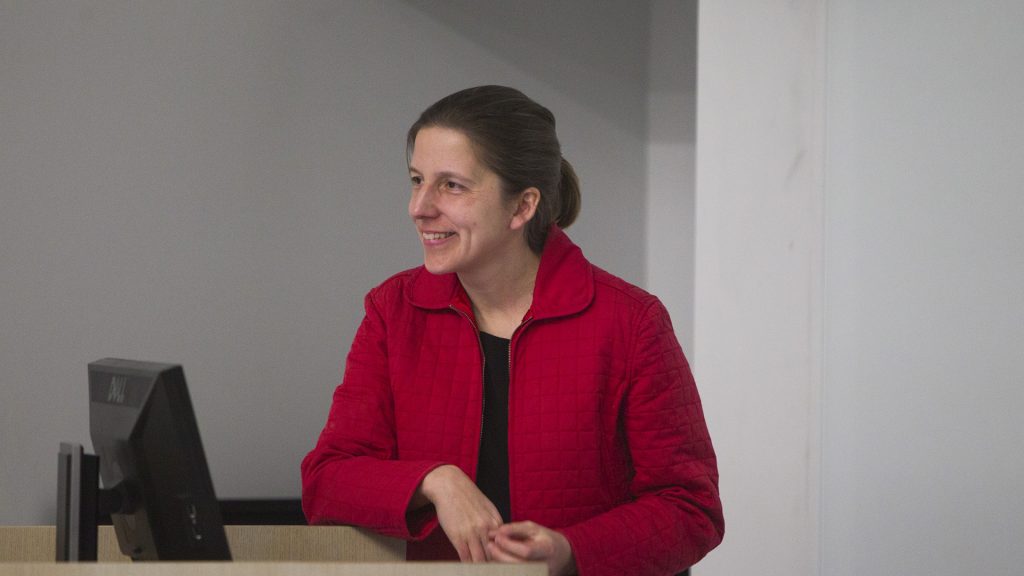Art is in the eye of the beholder.
Anne Leonard explored the idea of the concealed canvas and its possibilities in her lecture “The Turned Canvas and the Musical Turn: Thoughts on the Romantic Imagination” on Wednesday afternoon.
Leonard is the senior curator of European Art at the University of Chicago’s Smart Museum. This was Leonard’s first time visiting the UI, and her lecture centered on the communication of art and how it reaches each of its audiences differently.
“It’s focused on German romanticism … and there’s a lot of philosophical ideas about … idealism and the self … the existence of material things versus ideas of the mind,” Leonard said. “A kind of a discourse that comes to be really important for visual art.”
After the lecture, attendees were invited to ask Leonard questions on her presentation and the ideas of the turned canvas in relation to an artist’s purpose.
Luis Martín-Estudillo, a UI professor of Spanish and Portuguese, invited Leonard to speak at the Voxman Music Building.
Martín-Estudillo wrote in an email to The Daily Iowan in which he said he invited Leonard because of her knowledge and experience in the the fields of art and music.
“She is someone whose expertise can be of interest for our interdisciplinary collective, as she works on issues related to visual arts, music, and the history of culture and ideas,” Martín-Estudillo said.
The lecture centered on artistic works from 19th-century Germany that feature a turned canvas in the piece. These collections reveal the representations of an artist at work, said Leonard.
UI graduate student Cody Norling said he was thankful for Wednesday’s lecture.
“I appreciated the inherent interdisciplinary nature … here in the School of Music, you have art historians bringing in a lecture connected to this larger European study … forum,” Norling said. “So I appreciate the mingling of the disciplines here.”
The lecture connected the ideas of art and music while relating to the idea of a concealed canvas. For each beholder, the analyzing of a work of art determines the significance of the hidden canvas, said Leonard.
Leonard’s expertise in interdisciplinary work made the lecture especially important to those in attendance.
“I’m very excited to bring to campus someone who does exemplary interdisciplinary work in the humanities and who also has very important experience working in fine-art institutions.” Martín-Estudillo said.
Leonard spoke of her own disciplinary work and how it has led to her explanations of German romanticism and the concealed canvas.



